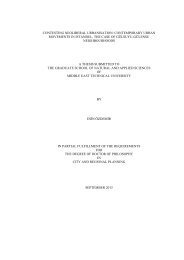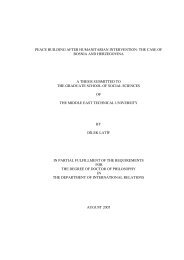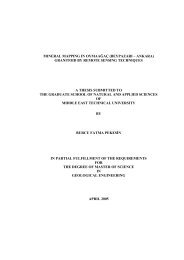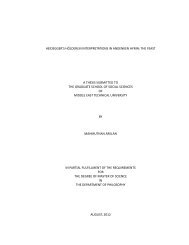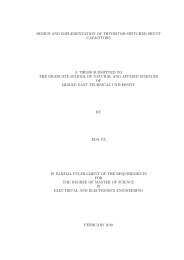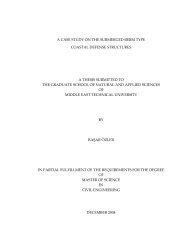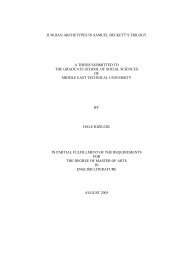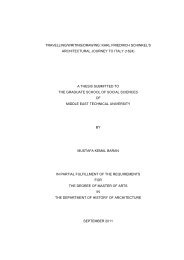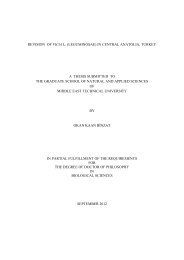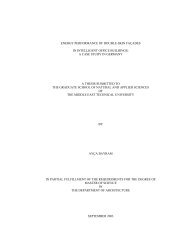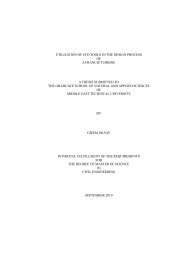View Original - Middle East Technical University
View Original - Middle East Technical University
View Original - Middle East Technical University
You also want an ePaper? Increase the reach of your titles
YUMPU automatically turns print PDFs into web optimized ePapers that Google loves.
Jessop’s uptake on the concept of régulation perhaps best expatiates on his analysis of<br />
regulation theory as an integral economic heuristic. He argues that prevarications<br />
litter the concept of régulation as (i)it first and at most touched upon a ‘site of a<br />
problem’, and therefore has been more diacritical than substantial; (ii)‘whereas most<br />
of the key Marxist concepts refer to the ‘naturally necessary’, enduring, invariant, and<br />
universal moments and laws of motion of capitalism considered as a mode of<br />
production, regulation refers to contingent, provisional, unstable, partial aspects<br />
associated with the external articulation of these relations with other social relations to<br />
produce more complex as well as more concrete concepts’; and (iii)there is not exactly<br />
a well-rounded ‘object of regulation’(Jessop 1990b:177). Three other ‘aspects’ of<br />
regulation theory, which Jessop considers under ‘regulationist challenges to critical<br />
realism, touch upon (i)‘the constitutive incompleteness of the capital relation’; (ii)‘the<br />
structural contradictions and strategic dilemmas’ intrinsic to the capital relation; and<br />
(iii)‘conflicts over the regularisation and/or governance of these contradictions and<br />
dilemmas’(:101). First, the tendencial aboutissement implicit in the self-valorisation<br />
of capital even at the most abstract level of analysis of the value-form is infinitely<br />
inconclusive, this is in fact a ‘naturally necessary’ fixture of capitalism. Secondly, the<br />
basic contradiction between use-value and exchange-value in the commodity form<br />
circumscribes all other ‘structural contradictions and strategic dilemmas’ intrinsic to<br />
capital.<br />
Structural contradictions are those circumstances ‘when the overall logic of an<br />
institutional ensemble generates opposed developmental tendencies; when there is a<br />
conflict or tension between the requirements of system reproduction and individual<br />
action; and when a social relation is so constituted that it tends to produce socially<br />
structured conflicts between inherently antagonistic interests’. On the other hand,<br />
‘when agents face choices such that, within given parameters and horizons of action,<br />
any action that they pursue(including inaction) will undermine some key condition(s)<br />
of their existence and/or their capacities to realize a broader set of interests’, this<br />
would be a strategic dilemma(Jessop 2002:277-8). Still the forms of these<br />
contradictions and dilemmas are not invariable. Finally, as with contradictions and<br />
78



